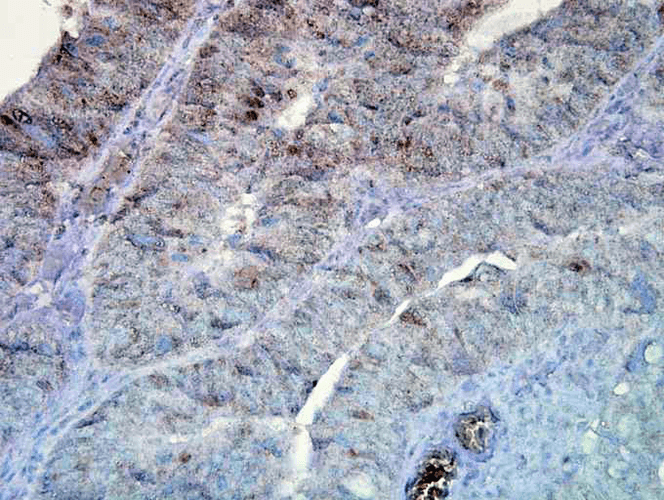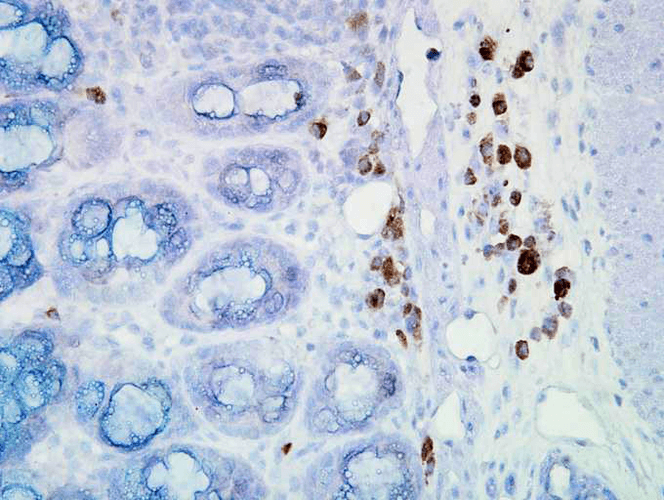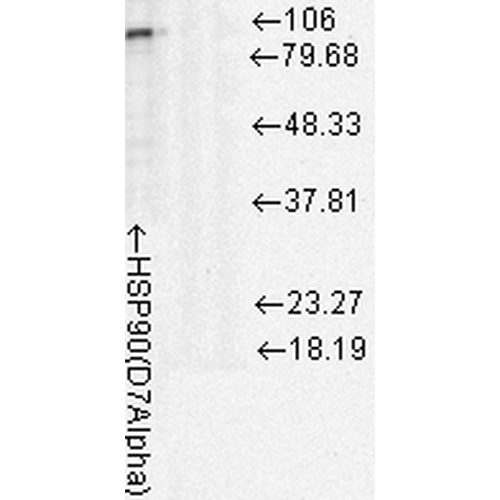SMC-137S SMC-137D
Promo Available
Scientist.com Supplier
HSP90 Antibody, Clone D7A
Stressmarq Biosciences
Image

Image

Image

DESCRIPTION
Mouse Anti-Chicken HSP90 Monoclonal IgG1
DETAILS
- Target: HSP90
- Gene Id: 9031
- Isotype: IgG1
- Conjugate: Unconjugated
- Immunogen: Full length protein HSP90 purified from chicken brain
- References: 1. Schuh S. et al. (1985) J Biol Chem. 260 (26): 14292-14296. 2. Lipsich L.A., Cutt J.R. and Brugge J.S. (1982) Mol. Cell Biol. 2(7): 875-880. 3. Brugge J.S., Yonemoto W., and Darrow D. (1983) Mol. Cell. Biol. 3(1): 9-19. 4. Arlander SJH, et al. (2003) J Biol Chem 278: 52572-52577. 5. Pearl H, et al. (2001) Adv Protein Chem 59: 157-186. 6. Neckers L, et al. (2002) Trends Mol Med 8:S55-S61. 7. Pratt W, Toft D. (2003) Exp Biol Med 228:111-133. 8. Pratt W, Toft D. (1997) Endocr Rev 18: 306–360. 9. Pratt WB. (1998) Proc Soc Exptl Biol Med 217: 420–434. 10. Whitesell L, et al. (1994) Proc Natl Acad Sci USA 91: 8324– 8328.
- Swiss-prot: P11501
- Specificity: Recognizes 90kDa. Can isolate complexes of HSP90, Src kinase and cec37.
- Applications: WB | IHC | IP | ELISA | AM
- Clone Number: D7A
- Field of Use: Not for use in humans. Not for use in diagnostics or therapeutics. For in vitro research use only.
- Host Species: Mouse
- Product Type: Monoclonal
- Purification: Protein G Purified
- Concentration: 1 mg/ml
- Research Areas: Cancer | Heat Shock | Cell Signaling | Protein Trafficking | Chaperone Proteins | Cancer | Tumor Biomarkers
- Storage Buffer: PBS pH7.2, 50% glycerol, 0.09% sodium azide *Storage buffer may change when conjugated
- Accession Number: NP_001103255.1
- Alternative Names: HSP86 Antibody, HSP89A Antibody, HSP90A Antibody, HSP90AA1 Antibody, HSPC1 Antibody, HSPCA Antibody, HsoCAL3 Antibody
- Antibody Dilution: WB (1:500), IP (5µg) ; optimal dilutions for assays should be determined by the user.
- Cite This Product: StressMarq Biosciences Cat# SMC-137D, RRID: AB_2121062
- Immunogen Species: Chicken
- Storage Temperature: -20ºC
- Shipping Temperature: Blue Ice or 4ºC
- Cellular Localization: Cytoplasm | Melanosome
- Scientific Background: HSP90 is a highly conserved and essential stress protein that is expressed in all eukaryotic cells. From a functional perspective, HSP90 participates in the folding, assembly, maturation, and stabilization of specific proteins as an integral component of a chaperone complex (4-7). Despite its label of being a heat-shock protein, HSP90 is one of the most highly expressed proteins in unstressed cells (1–2% of cytosolic protein). It carries out a number of housekeeping functions – including controlling the activity, turnover, and trafficking of a variety of proteins. Most of the HSP90- regulated proteins that have been discovered to date are involved in cell signaling (8-9). The number of proteins now known to interact with HSP90 is about 100. Target proteins include the kinases v-Src, Wee1, and c-Raf, transcriptional regulators such as p53 and steroid receptors, and the polymerases of the hepatitis B virus and telomerase(6). When bound to ATP, HSP90 interacts with co-chaperones Cdc37, p23, and an assortment of immunophilin-like proteins, forming a complex that stabilizes and protects target proteins from proteasomal degradation. In most cases, HSP90-interacting proteins have been shown to co-precipitate with HSP90 when carrying out immune-adsorption studies, and to exist in cytosolic heterocomplexes with it. In a number of cases, variations in HSP90 expression or HSP90 mutation has been shown to degrade signaling function via the protein or to impair a specific function of the protein (such as steroid binding, kinase activity) in vivo. Ansamycin antibiotics, such as geldanamycin and radicicol, inhibit HSP90 function (10). For more information visit our HSP90 Scientific Resource Guide at http://www.HSP90.ca.
- Certificate of Analysis: 2 µg/ml was sufficient for detection of HSP90α in 20 µg of heat shocked HeLa cell lysate as well as in 100 ng of human HSP90α protein by colorimetric immunoblot analysis using Goat Anti-Mouse IgG:HRP as the secondary.
- Species Reactivity Full Name: Human | Mouse | Rat | Bovine | Pig | Rabbit | Chicken
PROMOTION TERMS
Trial Size Available. Limit 1